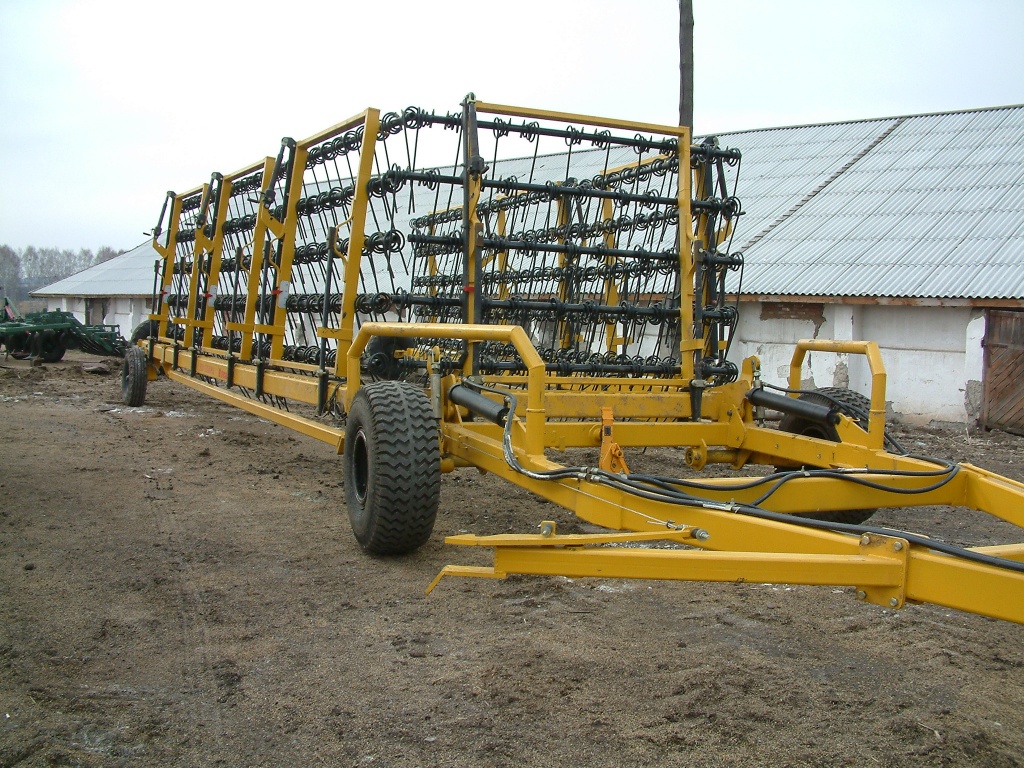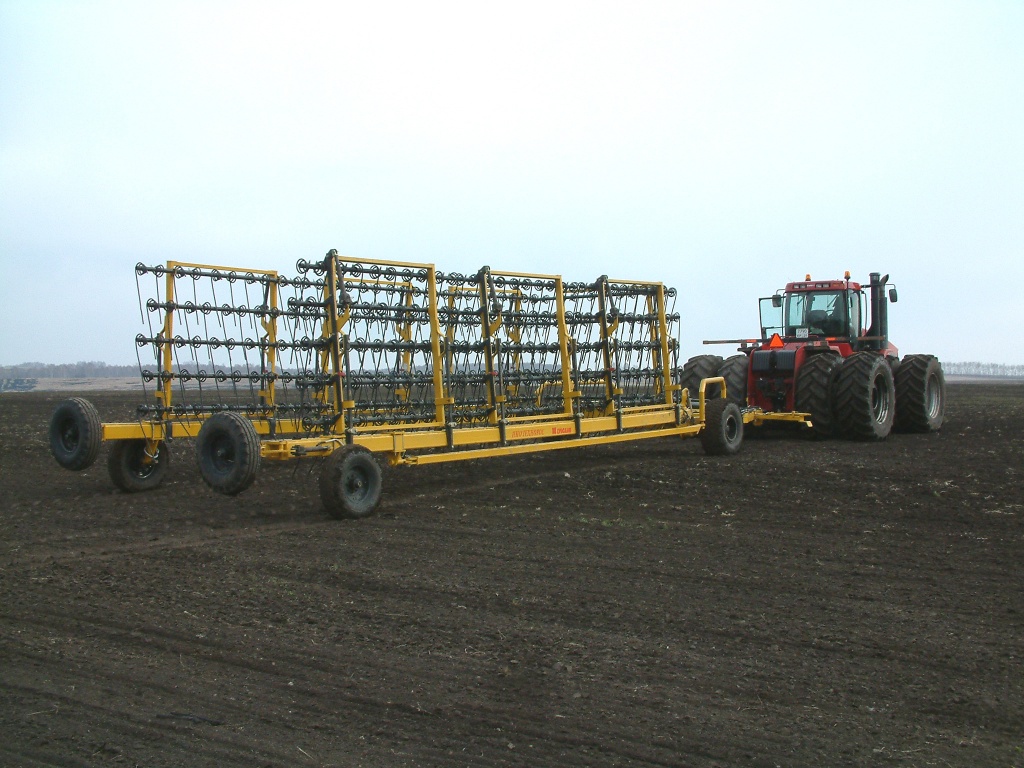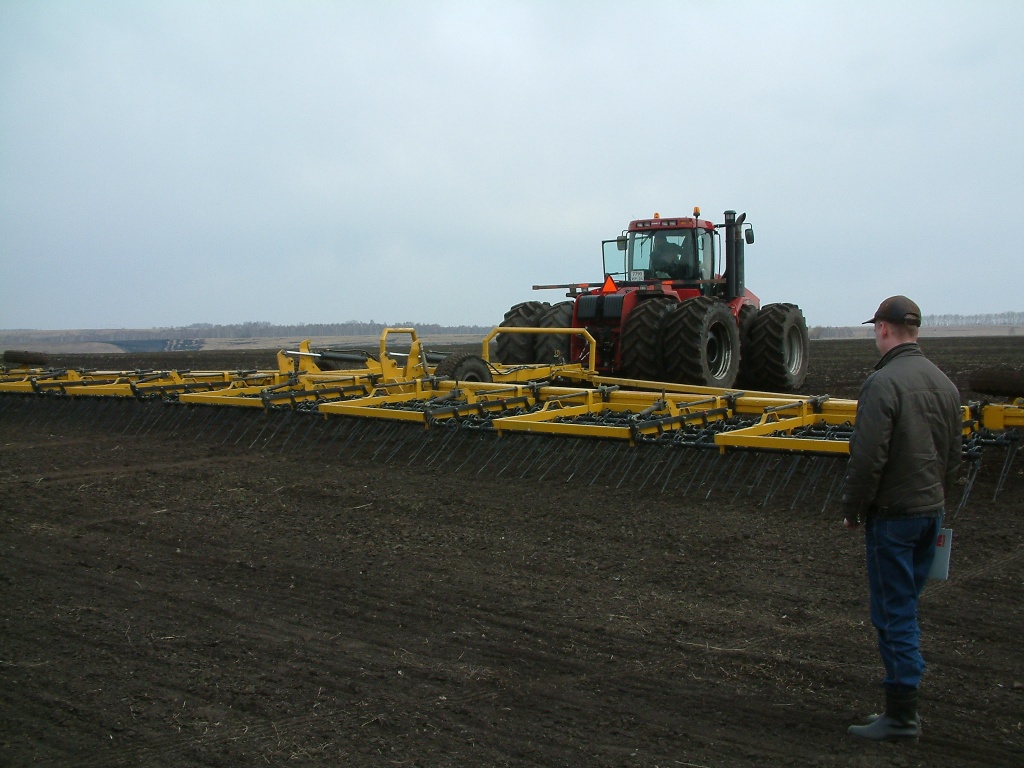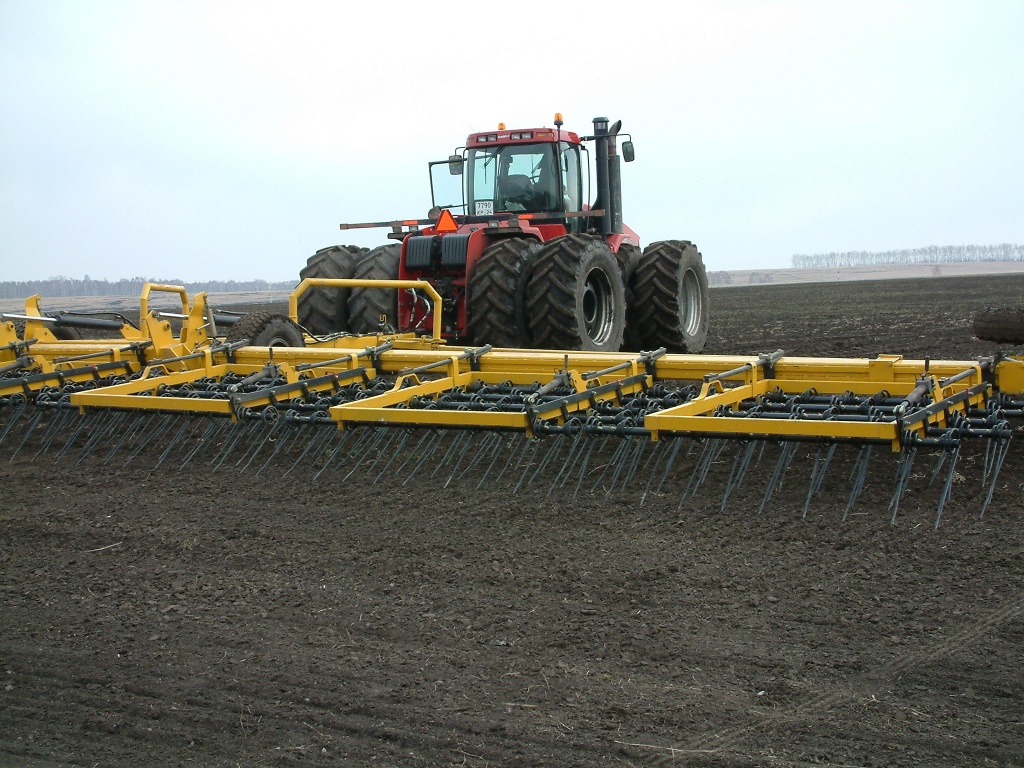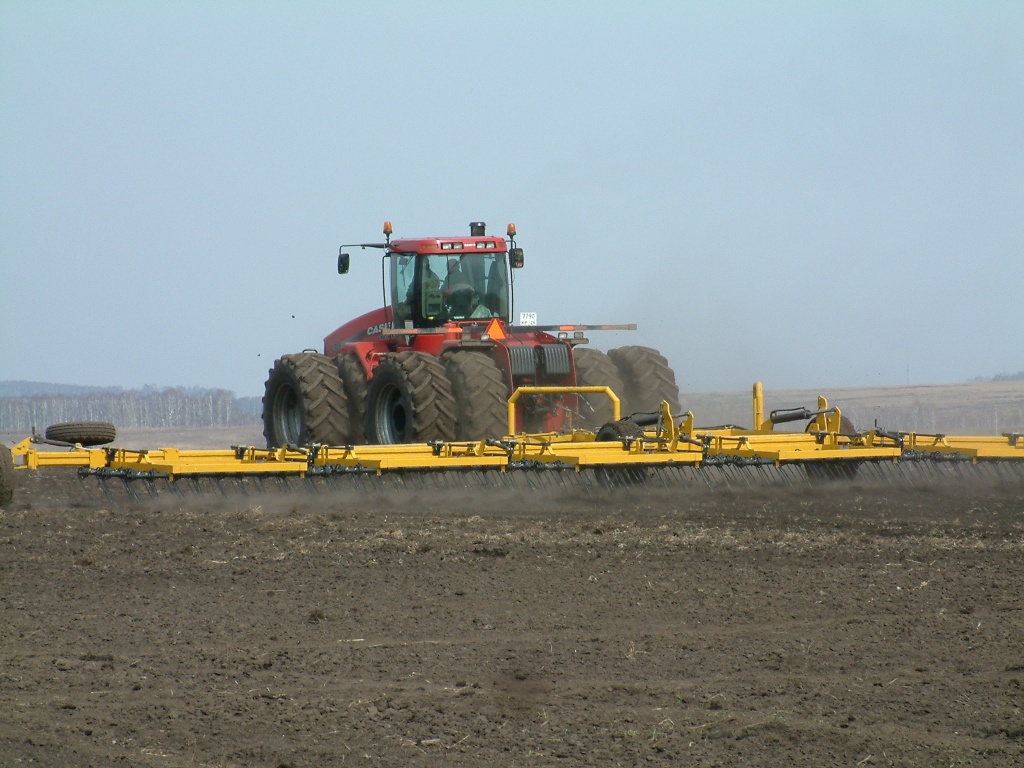- Eng >
- Production >
- Agricultural machinery
Harrow spring BTM-21 BTM-18
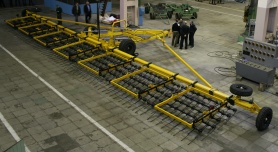
Spring-tooth harrow is a new progressive technique that allows to move away from traditional tillage practices.
Spring harrow is a new progressive technique that allows < font color = "# 000000 "> depart from traditional tillage practices .
Successful introduction of advanced technology soil treatment depends largely on the work carried out with crop residues . Saving instead of collecting trash baler , burning or embedding , provides many benefits, including :
- hold snow delay snowmelt and rainwater ;
- reduction of water loss as a result of fumes ;
- improving the organic composition soil ;
- reduction of wind and water erosion .
To take advantage , with qualitative performance sowing must evenly distribute straw for plowing and repaired it in the soil. This allows you to :
- improve seed contact soil ;
- prevent clogging frame unit ;
- destroy a favorable environment for insect development ;
- prevent weeds clogging
- prevent delay nitrogen fertilizers in the straw .
Principle of operation is based harrows on the excitation of chaotic oscillations working bodies (rods ) while driving harrows by svezhevspahannomu field. as a working body in spring harrow tines are used to the motion on the ground vibrate , not only increasing its razryhlyaemost but intensely destroying large clods . In comparison with the traditionally used disc harrow teeth and working bodies of spring harrows less clogged by foreign objects , and if any solid object does not fail , deviating from the original position .
This type of equipment is versatile and allows for a large inventory of agricultural methods . < / font>
Spring harrow has braced - sectional design with an elastic suspension that can significantly extend the front harrowing ( to reduce the number of passes for plowing ) , and allows , at the level of design to solve the rapid transition from the transport position to working .
Translation harrows from vehicle working position and back the most mechanized, and does not take a lot of time
Includes a total adjustment angle spring tines using jackscrews in sections , allowing one run harrow different agricultural methods and allows us to adapt to the peculiarities of specific harrow fields .
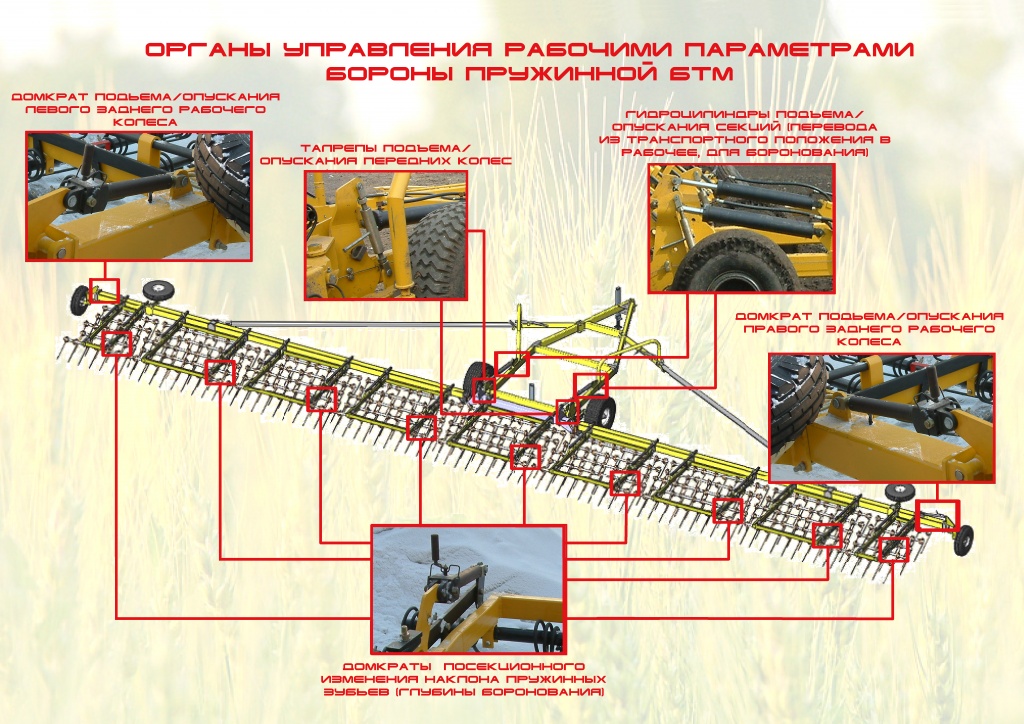
Specifications spring harrows
|
№ |
Parameter name
|
BTM-21 |
BTM-18 |
|
1. |
Width harrowing in one pass, m |
21 |
18 |
|
2. |
Overall dimensions in working position, mm: - length - width - height |
8 570 23 110 1 500 |
8 570 20 110 1 500 |
|
3. |
Габаритные размеры в транспортном положении, мм: - length - width - height |
16 370 3 966 3 182 |
14 870 3 966 3 182 |
|
4. |
Weight, kg |
6 700 |
5 520 |
|
5. |
Transportation speed, km / h |
30 |
30 |
|
6. |
Operating speed, km / h |
18 |
18 |
|
7. |
Tractor power, hp |
От 200 |
От 250 |
Spring harrows BTM passed mandatory certification. The Certificate of Conformance (№ TC RU C-RU.AB24.B.00025; Series RU № 0005027).
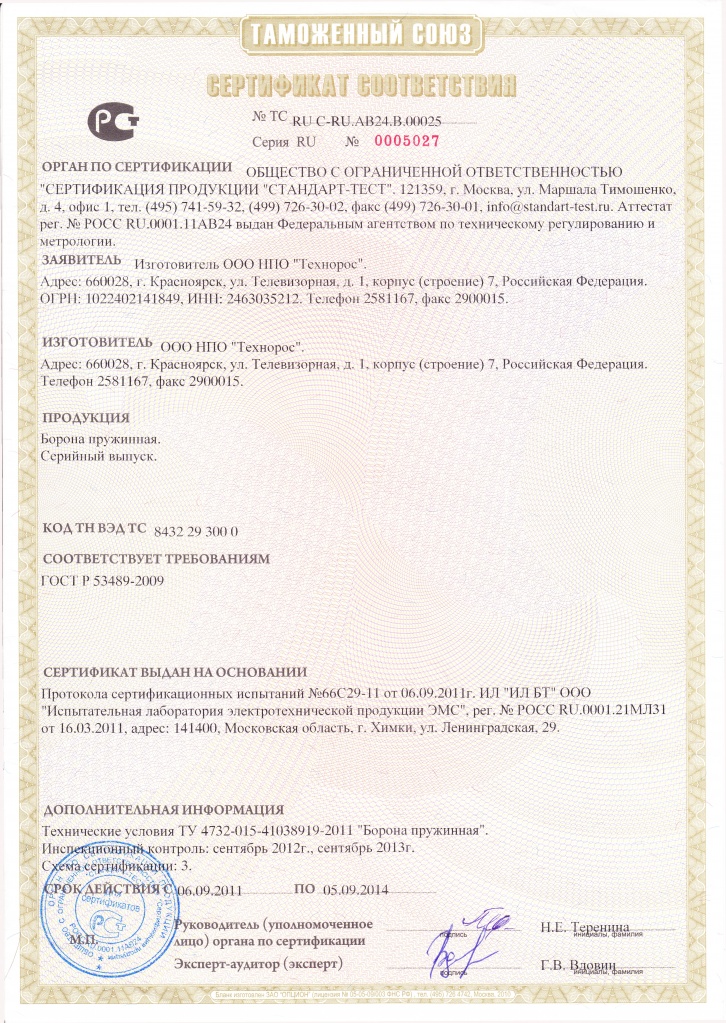
In harrows BTM uses a new, patented design of the spring tooth having better durability and greater adaptability.
In the double spring tooth, elongated working rods arranged in parallel, each operating bar has a bend radius-shaped protrusion. Performing on your rod for radius bending can improve the uniformity of straw residues due to the appearance in the construction of the self-cleaning of the tooth element, hold excess straw.
When driving dual spring tooth bending located at each workstation rod grabs a bundle of straw. Curved beam bending stretches the straw until it breaks due to friction with the surface treatment. At the same time due to the bending radius of the beam shape is no straw stuck in the element.
Key features provided by spring harrows
Application of advanced technologies aimed at soil treatment work carried out with crop residues, straw, cleaning fields of weeds, as well as to create more favorable conditions for the preservation and improvement of the structure and composition of the soil (mineral and organic).
1. Saving residue under winter and uniform distribution of straw, instead of collecting the baler, burning or embedding presents many advantages, including:
- snow retention, delayed snowmelt and rainwater;
- reduce the loss of moisture due to evaporation;
- improvement in the organic composition of the soil;
- reduction in wind and water erosion.
2. Incorporation of crop residues and straw in a uniformly distributed improves soil structure and 10% to reduce the need for application of fertilizers.
Uniform distribution of straw creates a number of advantages:
- improves seed to soil contact;
- prevents clogging frames seeders;
- eliminates a favorable environment for the development of insects and rodents;
- prevents clogging weeds;
- delay prevents nitrogen fertilizer in the straw.
When classical technology harvester distributes straw and crop residues wide ribbon. Separation occurs at portions of the field to a more dense and less dense covering, which leads to the formation of zones with different fluktuativnyh characteristics. As a result, the subsequent seeding, the seedlings are observed and irregular uneven ripening, resulting in a loss of productivity. Therefore it is very important to achieve a uniform distribution of straw residues. This can be achieved using spring harrows.
3. When harrowing held after the harvest is done the following cultural practices, uniform distribution of straw in the field and incorporation of straw and crop residues into the soil. This operation is achieved by adjusting the angle of the spring tooth harrow to the soil and speed on the field harrows.
4. Harrowing winter crops, as performed by the spring harrows, does not damage the crop itself provokes early germination of annual weeds, which subsequently die from the cold, and pulls on the surface of the root system is already germinating weeds (comb), which also contributes to discrimination against them. This effect is achieved by adjusting the angle of the tooth of the spring and adjusting its penetration in soil treatment.
5. In preparation for spring planting through spring harrows can also evenly distribute the straw in the field. This creates a protective layer of straw on the field surface. Such a layer in hot weather prevents drying ground, protects the soil from wind and water (rain) erosion.
